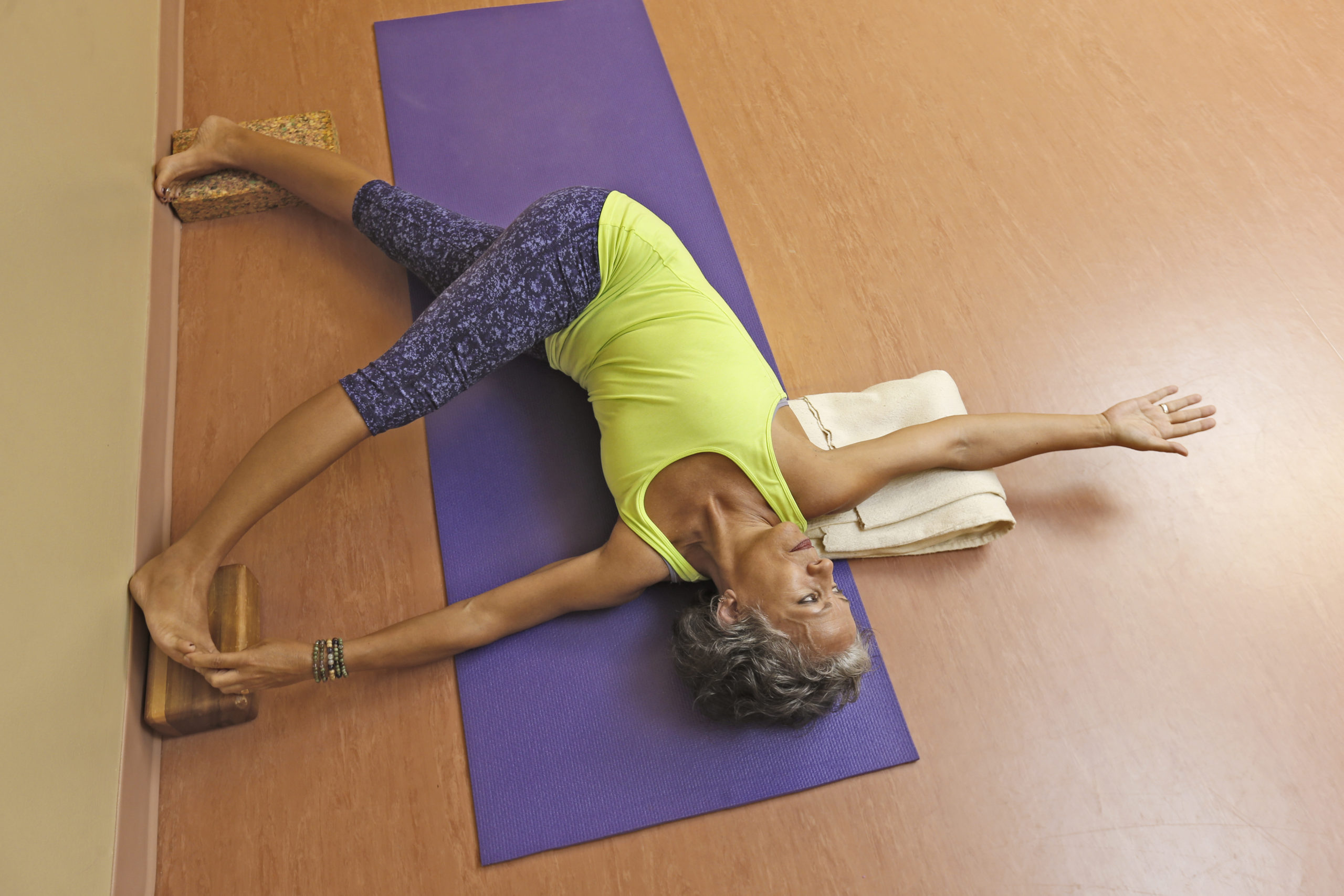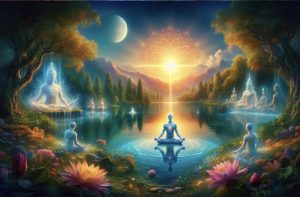Parivrtta Trikonasana or reverse triangle pose presents several challenges for yoga practitioners, primarily maintaining the stability of the pelvis and legs while rotating the rib cage. Those of us with constricted rib cages or shoulders may find ourselves rotating the pelvis in the same direction as the twisting torso, which diverts the twist from its intended target (the spine), destabilizes the pelvis, and throws off our sense of balance. Practicing this supine variation helps us to stabilize our hips and legs while allowing the support of the floor to ease us into the torso twist.
When we are able to ground the legs and pelvis and activate our core muscles, we are rewarded with greater ease and flexibility along the spine. The turning of the spine squeezes and releases the abdominal organs, aiding our digestive system. Increased balance, strength, digestion and flexibility are a panacea to a stressed and aging lifestyle.
Lie on your left outer hip facing the wall. Place a low block under the outer edge of your back foot; release your back foot/heel to the wall. Place 1 or 2 blocks under the big-toe side of your front foot. Both legs are straight, and the torso is side-bending toward the front foot. Reach your left hand toward your right foot, and on an exhale, rotate the torso and right arm to the right. You may need to place support under your right shoulder and arm.
Align the crown of your head over your pelvic floor with your arms in the T position. If you have the space, roll your head to look over your right hand. Stay in the pose for 3 minutes on each side ( 1 minute to settle into the pose, 1 minute to practice the yoga actions, and 1 minute to allow the body and the Vijnanamaya Kosha (intuition) to respond with truth and wisdom. Listen and learn what life is showing you.
Yoga Action (Annamaya Kosha):
1. Soften and broaden the dimples or notches of the sacrum — left and right sides (see image below).
2. Notice how the top of the sacrum nutates (moves) inward.

Yoga Action (Pranamaya Kosha):
1. Energetically, draw a line with your yoga imagination down the inside of the buttocks closest to the sacrum, around the sit bones, and continue drawing the line up the outer buttocks to the outer hips and hip crest.
Yoga Action (Manomaya Kosha):
1. Silently ask yourself, “Where do I need more stability?”; “Where do I need greater ease?”
2. When you have balanced your stability and ease, rest in the pose by silently repeating “I am stable and at ease.”
NOTE: It may take more than one pose before you awaken these yoga actions or areas in your body and begin to feel the arising sensations and releases. In that case, apply these yoga actions to the following poses, and notice the impact on your balance, strength, and flexibility.
BALASANA
UTTHITA TRIKONASANA
PARIVRTTA TRIKONASANA
ADHO MUKHA SVANASANA
For more yoga actions and teachings, click here. Namaste.





